Where should I focus my SEO strategy for the next year?
What emerging factors will help me get ahead of my competition?
What threats could hinder my success?
Our September 28 webinar examined the answers, moderated by me and presented by Shelley Walsh, Special Projects Editor here at Search Engine Journal.
Here’s a recap of the webinar presentation.

In May 2021, Search Engine Journal surveyed 2,830 SEO professionals and got a fantastic result response to our very first flagship state of SEO survey.
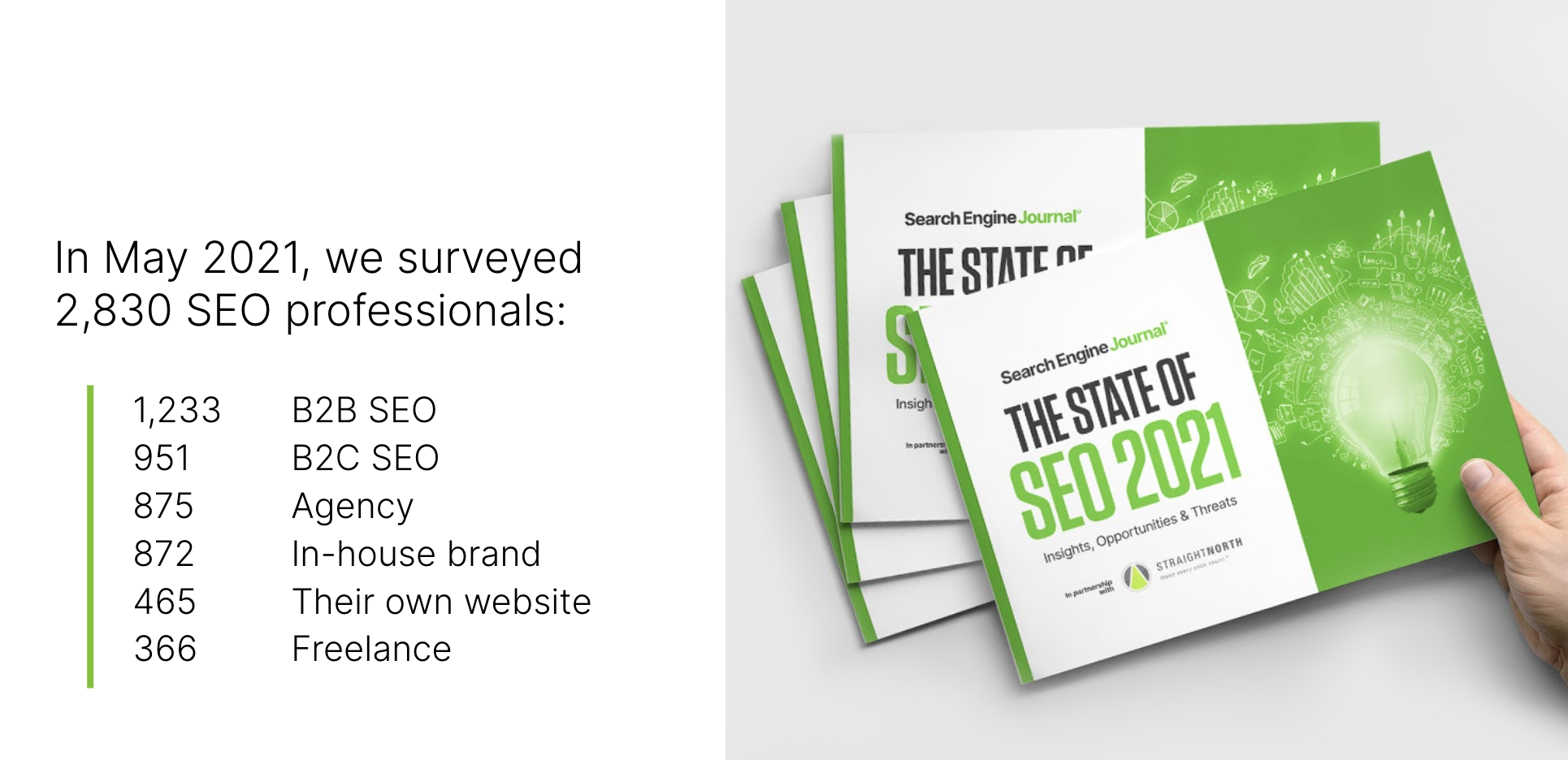
From the survey, we’ve taken the data and related it to moving forward for next year.
The focus is on emerging factors in SEO and what the threats are.
We are going to look at:
- What you should already be doing
- What you should start doing
Here’s a translation of these results and why they should matter.
First The Good News
Despite pandemic uncertainty, client budgets have increased.
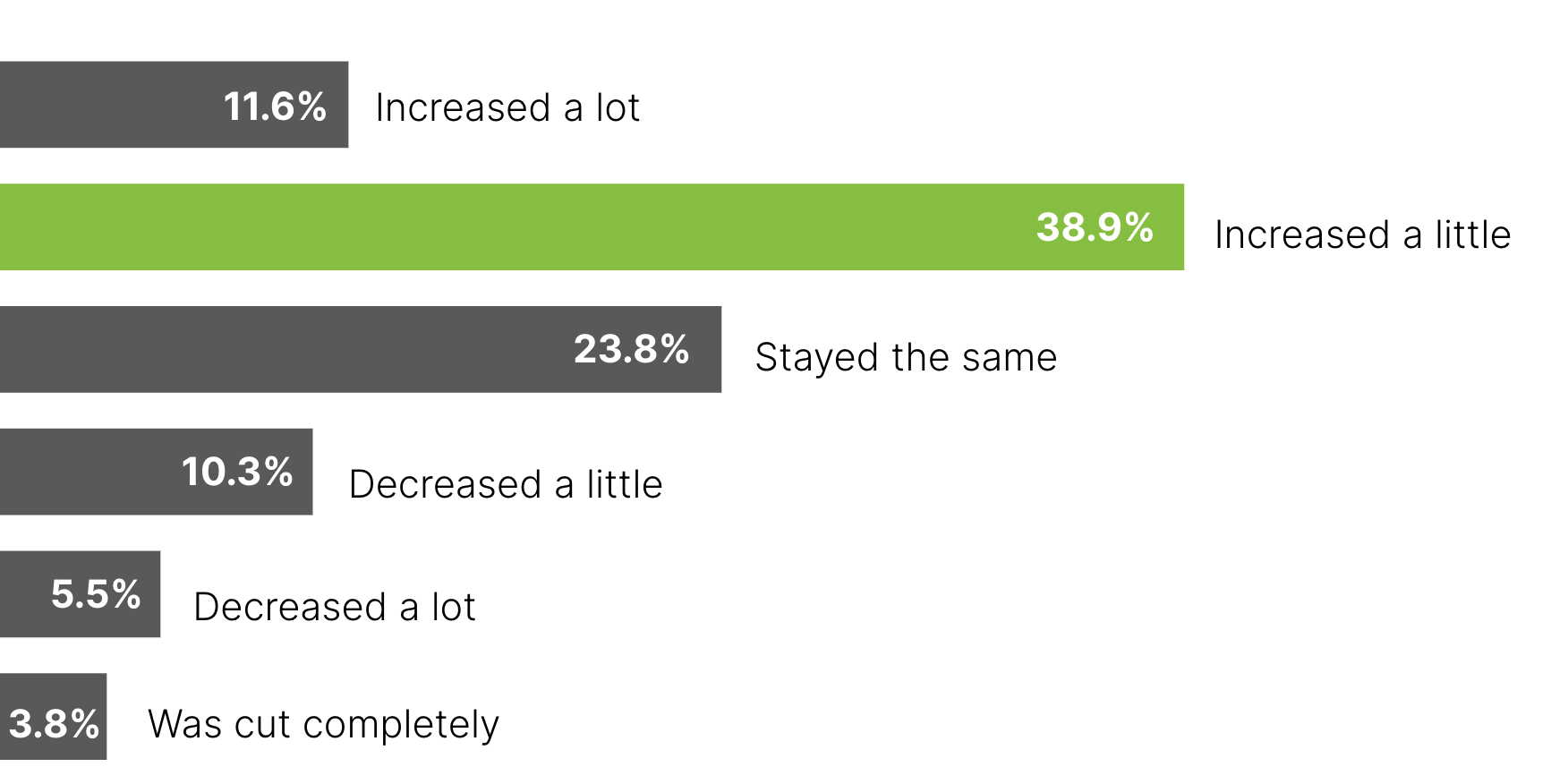
This chart represents how many businesses have doubled down on online spending and reduced offline spending quite considerably.
It also underlies how many clients initially froze their budgets when the pandemic started but quickly came back on board as it became apparent just how critical digital success was in the new pivot.
Clients finally get that SEO is essential to their success.
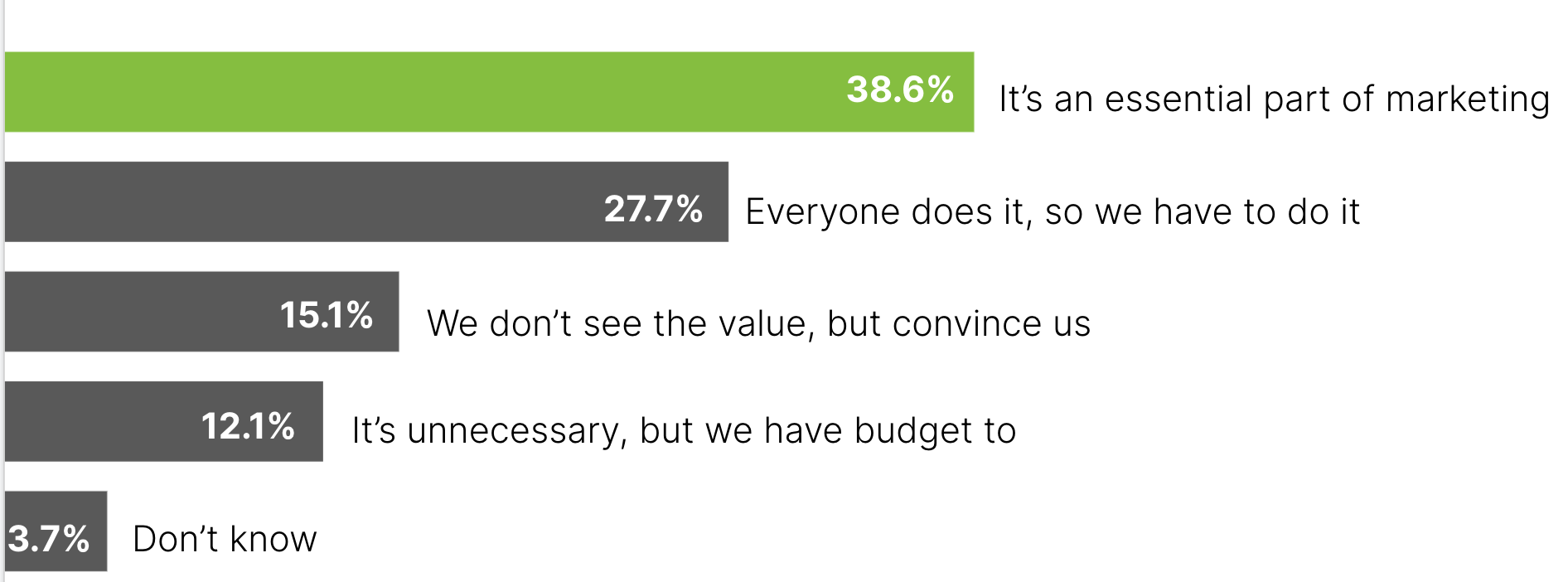
It indicates here that many see SEO as a core part of marketing strategy.
There is a real shortage of resources in the industry and a huge demand for talent. The knock-on effect of that has been a lot of salaries rising.
Now is a perfect time to be an SEO professional!
What You Should Be Doing
With the SEO industry being robust and healthy, there’s plenty of room for growth and opportunity.
So as an SEO professional, what should you be focusing on right now?
We asked our audience what were the most critical factors that contributed to ranking in the past year.
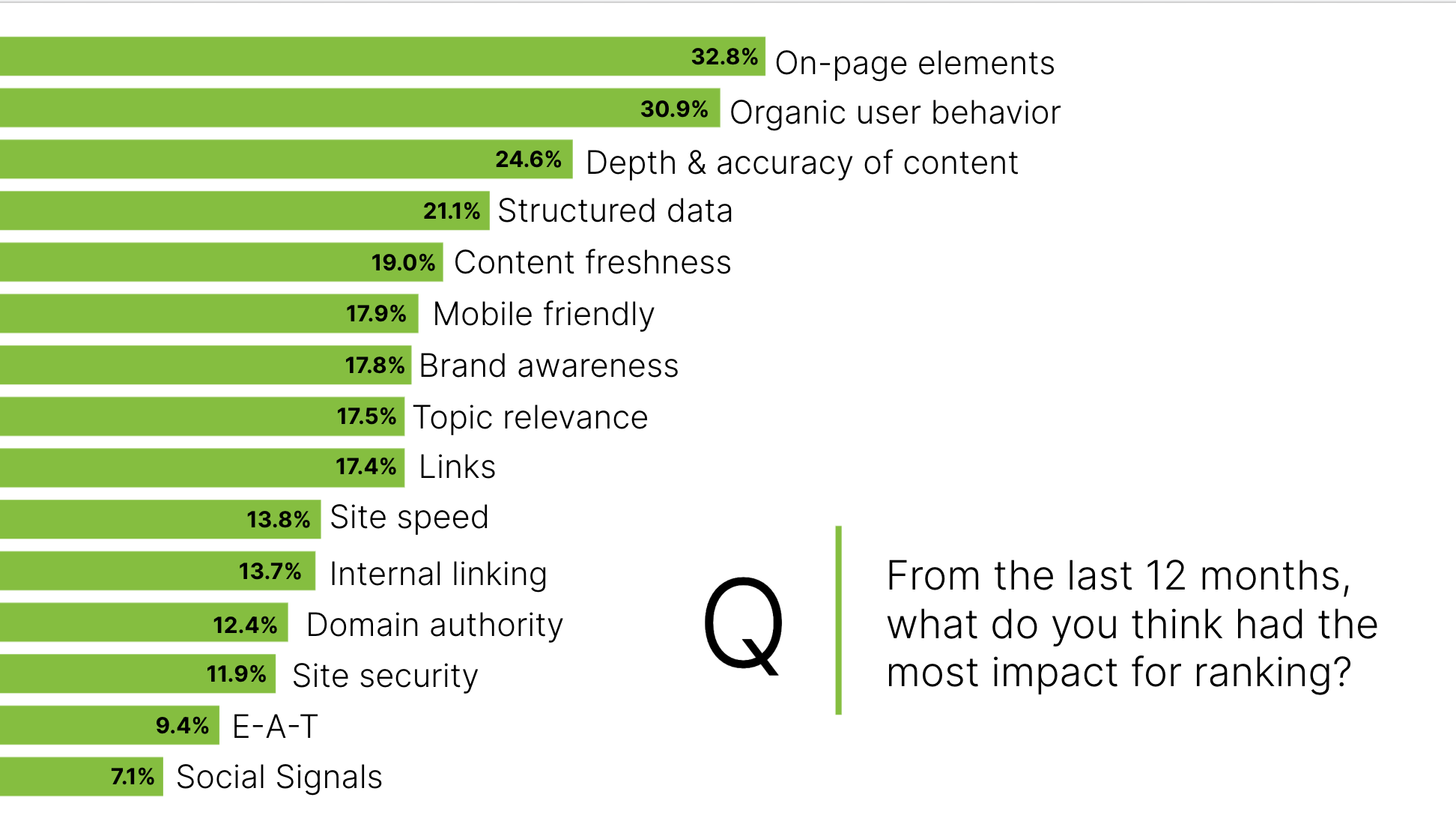
These results highlight what is at the core of SEO.
Since SEO is the sum of many parts that make up ranking successful, Walsh’s advice is to ensure that all your basics and best practices are in order.
- On-page metadata is fully optimized
- Content answers the user intent
- Link out to credible sources (if necessary)
- Site pages load quickly
- Build your brand online
- The site is optimized for mobile
- Optimize internal linking
In the following survey, we asked about the biggest threat to SEO in the next two years.
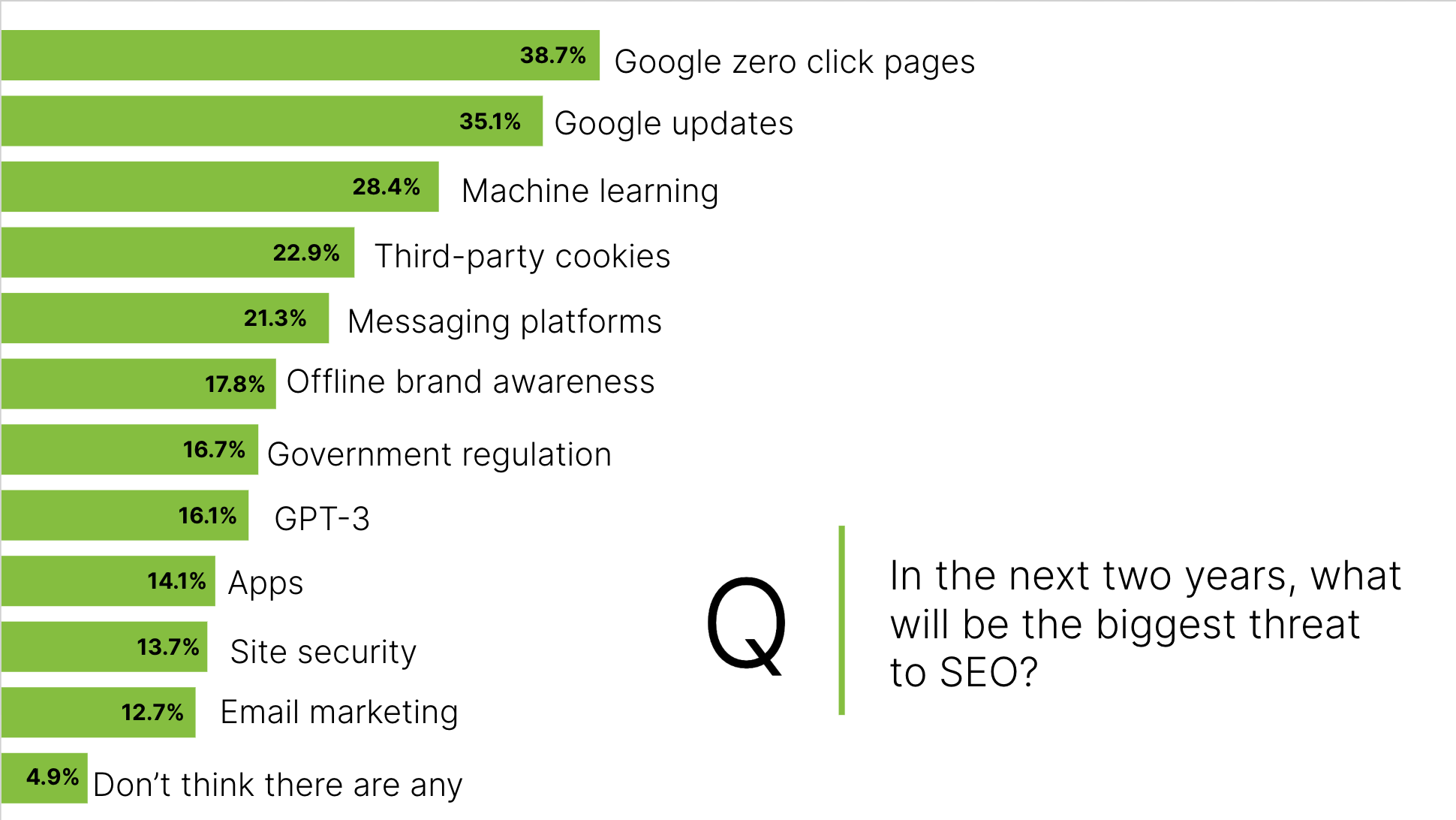
SEO is skewed heavily toward being dependent on Google through organic and paid search.
Google Is A Threat
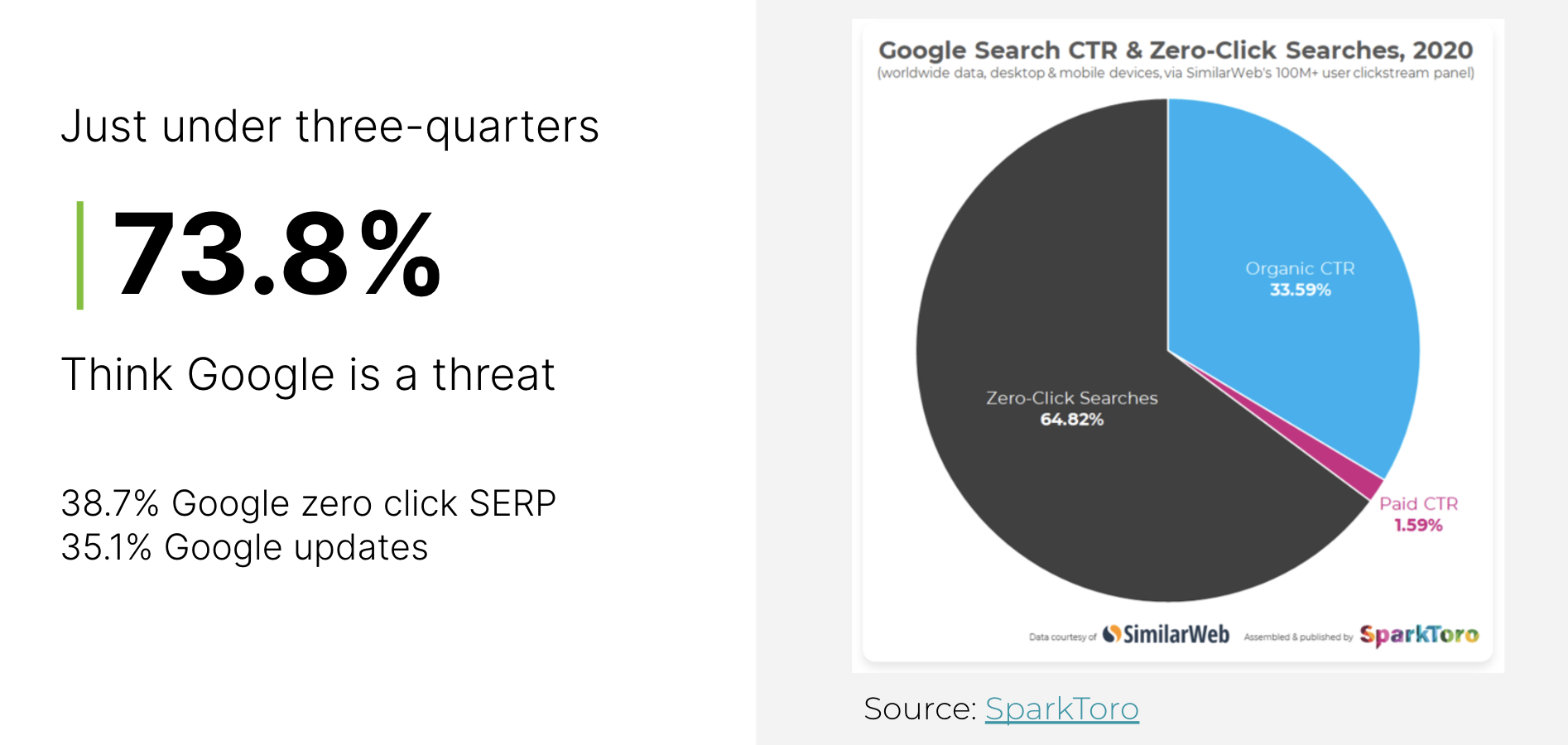
Google searches that ended without a click are not an accurate indicator of erosion of opportunity as some people might think they are.
But regardless, the discussion of zero-click SERPs being so dependent on any singular entity that we don’t control is a significant risk.
So what are we going to do to manage that and navigate the threat that Google is imposing?
Think like Google.
- No: How can I game the system?
- Yes: How can I best help my audience?
Give what Google wants.
It’s a complex symbiotic relationship. But Google needs publishers just as much as the publishers made Google now.
Google’s business is actually to provide quality data, and it just wants to make sure that its users are coming back.
So that means that the results they’re serving will be what is the best answer in the user’s query.
Google is putting the user front and center, and by getting into that mindset, you can start to build a more sustainable strategy and website.
Volatile or Sustainable?
Whether you like it or not, you’re in a close relationship with Google, and trying to work with them is far better than working against them.
What you need to think about is what kind of business do you want to build?
Do you want to game the system constantly, or do you want to build something you know is sustainable and has longevity?
What You Should Be Doing – Summary
- Apply best practices on all the top ranking factors – it’s a sum of many parts
- Work with Google, not against them – it’s a symbiotic relationship of mutual benefit
- Leverage zero-click SERPs by claiming featured snippets and rich results
What You Should Start Doing
As part of our survey, we asked what would be the most critical emergent factors in SEO in the next two years.
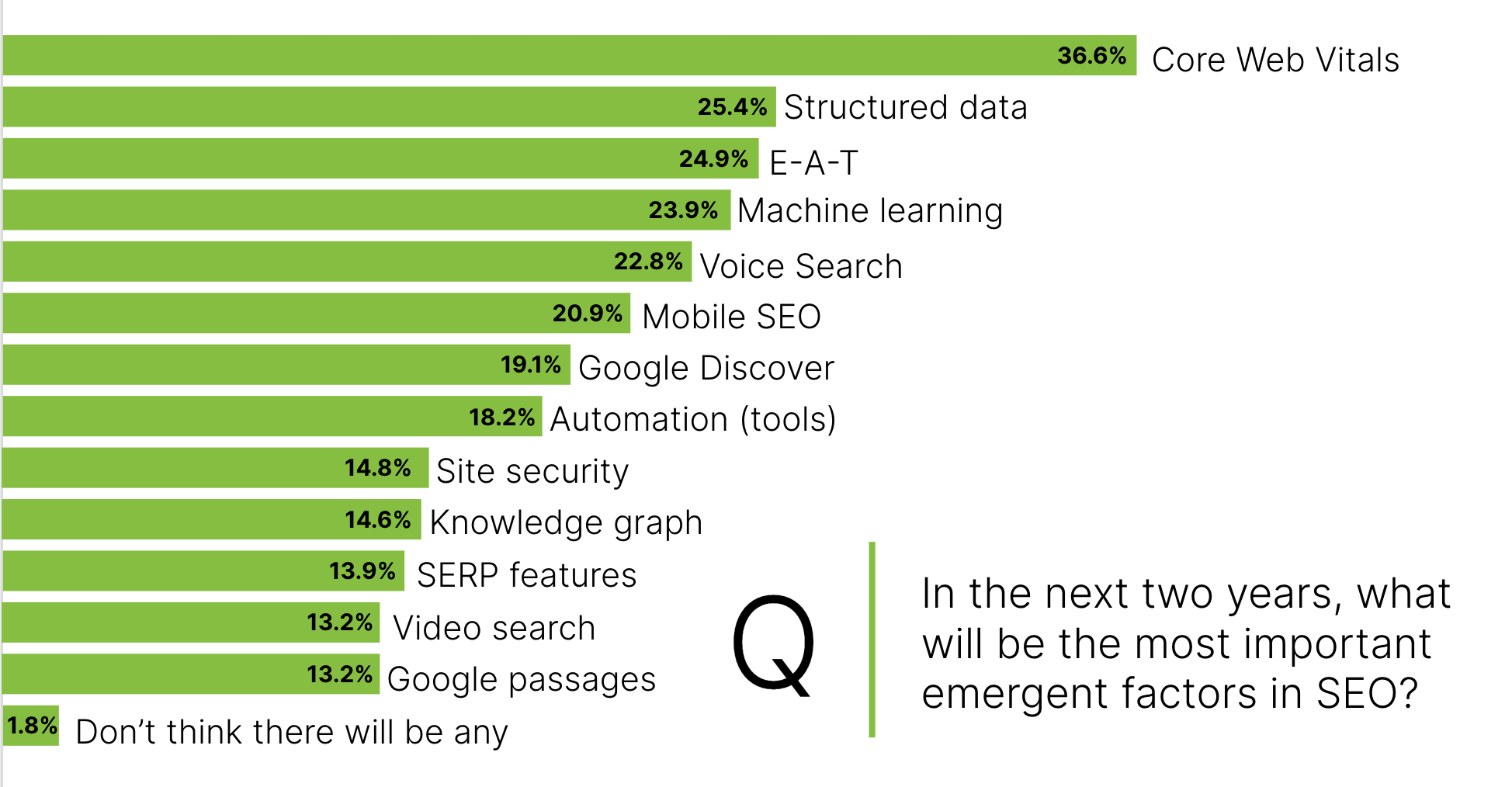
Walsh talked through a few of these factors and explained why they’re important and what you can do to get ahead.
Core Web Vitals
There has been quite a lot of discussion about just how important they are and how much they are contributing to ranking.
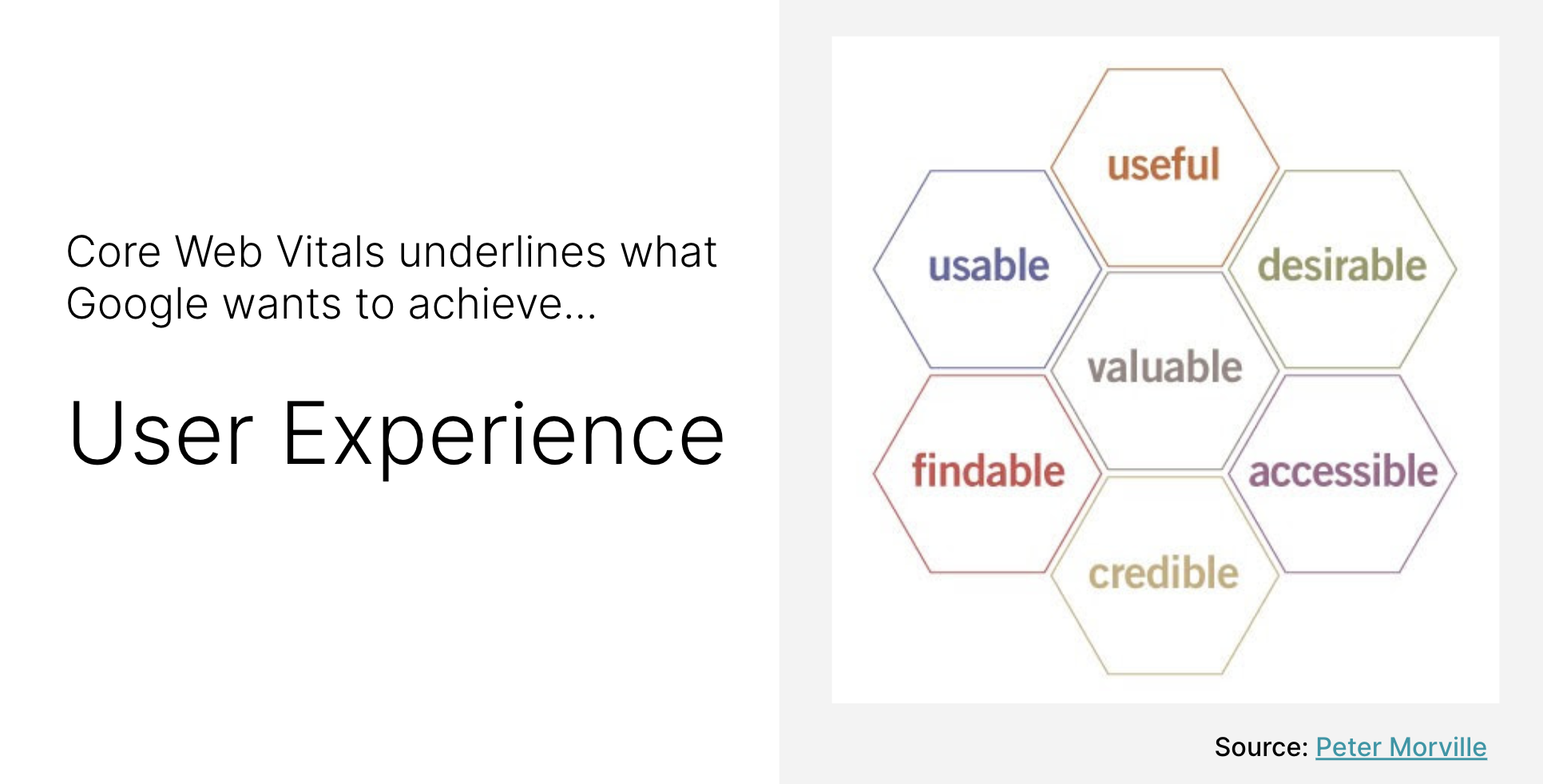
Google wants a fast page without obstruction so it can quickly serve results to a user.
They want their core business to be delivering the best results by sending users to pages that are delivering value on their promise.
They’re just trying to surface the best results to a query, and to do this, they do include a lot of user feedback.
To get your Core Web Vitals in perfect technical order, meet the following needs on the page:
- Desirable
- Credible
- Accessible
- Findable
- Usable
- Useful
Chase the user and not the algorithm.
Structured Data
“Google increasingly uses structured data to understand a site’s content and present better web results to users.”
–Google Chrome Developers
Applying schema to get rich results can significantly enhance certain listings.
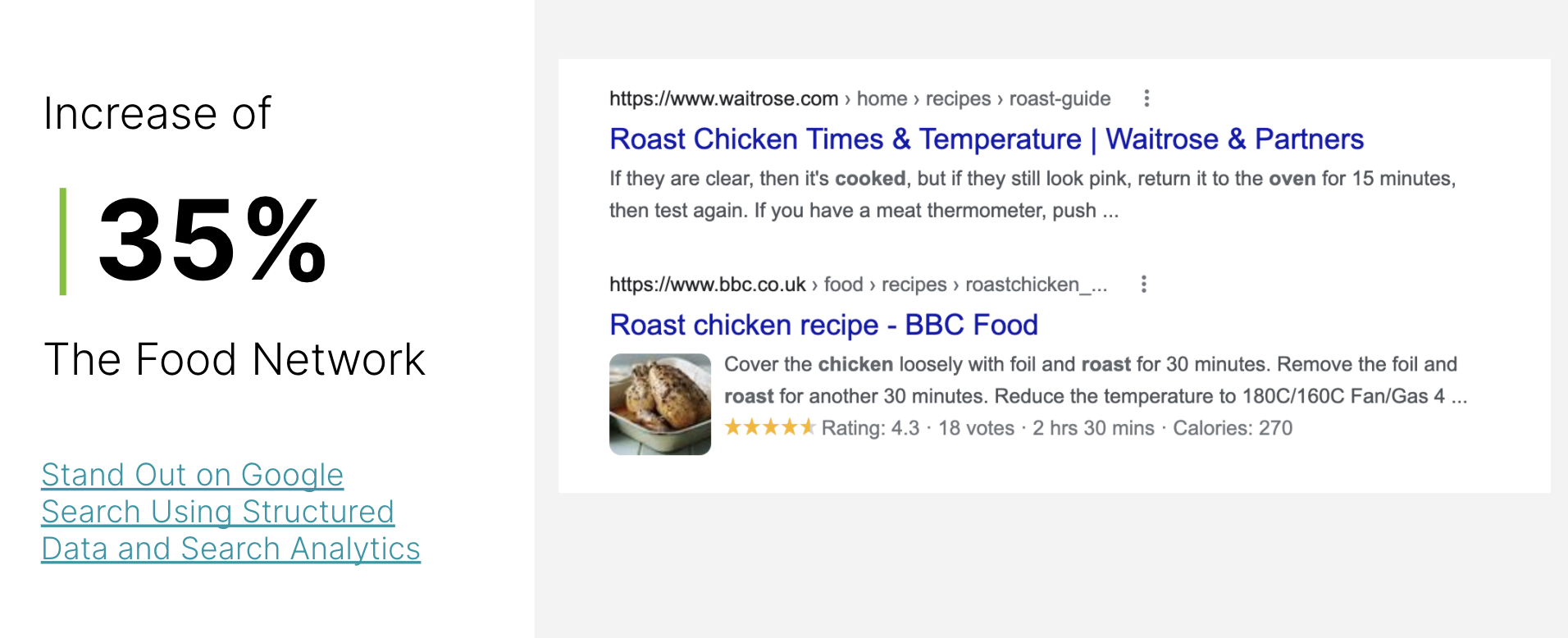
If you look here, you can see how the eye is drawn to the picture on the BBC site. The star ratings also make you look.
You also get that additional data on cooking time and calories, which helps get significant traffic too.
Knowledge Graph
Below is the result Walsh has included that wasn’t in the top four but is essential to focus on.
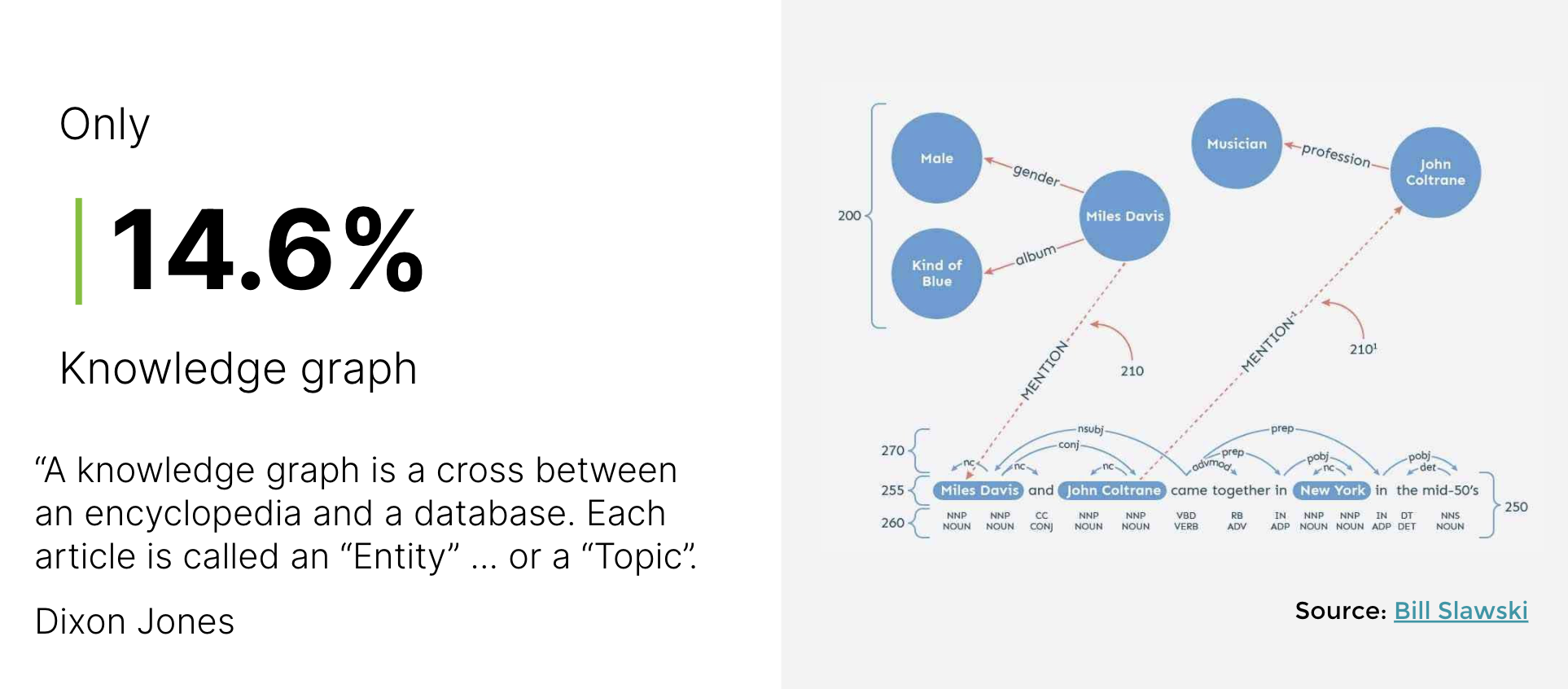
Google is passing structured data to identify entities.
If you look at this graph here on the right-hand side, you’ll know it’s highlighting entities such as:
- a person
- a profession
- album
- gender
- age
These are feeding the knowledge graph, and the knowledge graph is probably one of the most important factors to be considered in SEO right now.
It’s connecting information on the page, and it’s sending a lot of signals to Google.
The graph is pulling from various sources to give you the best solution without relying on one singular basis.
Wikipedia & Wikidata
The new knowledge graph also pulls data from trusted sources such as Wikipedia and Wikidata, so you can manipulate your knowledge panel by getting listings in these places.
Knowledge Panel vs Knowledge Graph
The Knowledge Panel and the Knowledge Graph are two different things.
Some people use those terms interchangeably, but they are different. The Knowledge Panel represents a subset of data from the Knowledge Graph.
Aside from the Knowledge Panel, using the Knowledge Graphs will also be critical for building a picture of relevance for topics.
To work with the Knowledge Graph, make sure you:
- Use structured data on pages in the correct form
- Check the schema validates.
- Find a complete list of markups at Schema.org.
Machine Learning
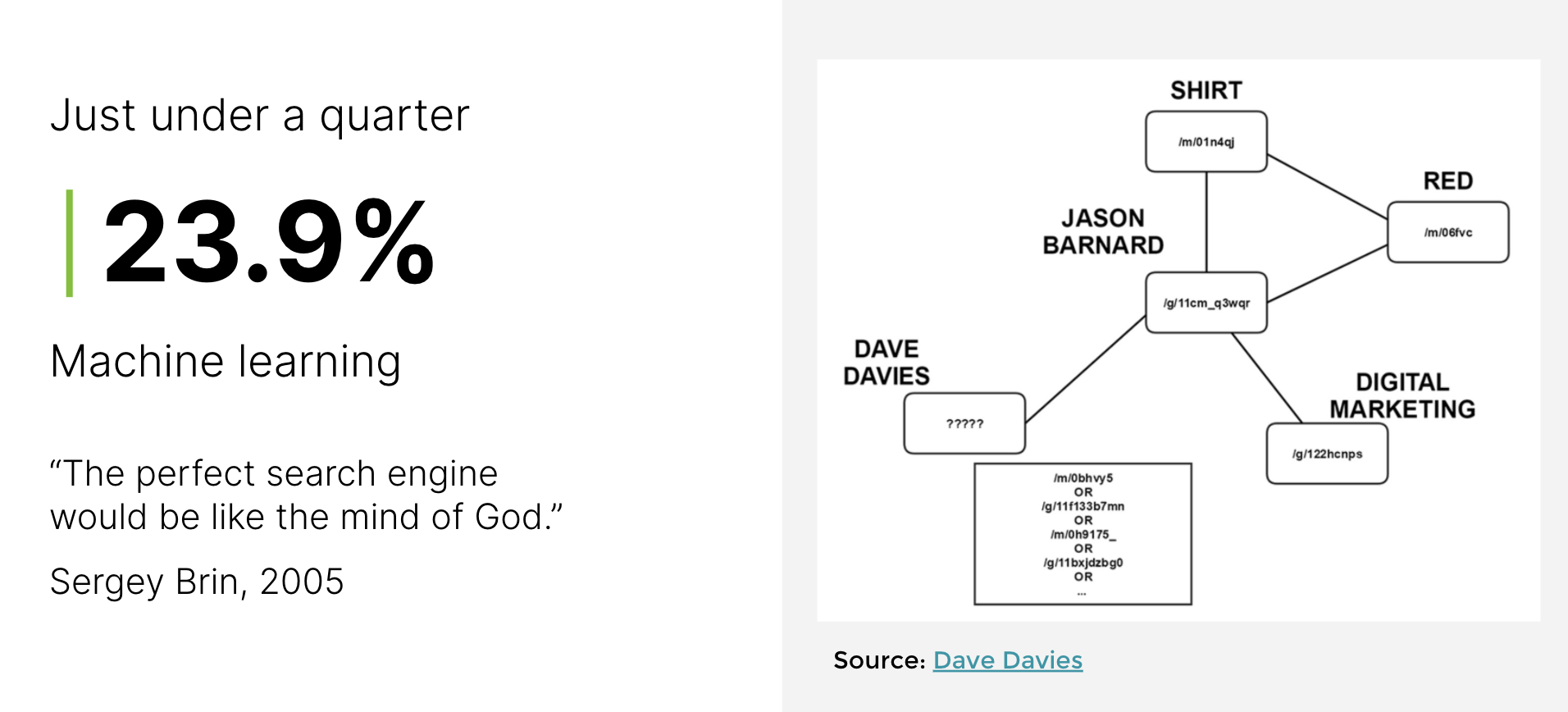
It’s essential to understand machine learning because it underlines everything about Google algorithms, evolving, and where the search is heading.
How Machine Learning, RankBrain, and Hummingbird Are Linked
Google rolled out Rankbrain in 2015, and it’s a system by which Google was striving better to understand the user intent of a search query.
The main focus of RankBrain was dealing with queries it had never seen before, so it was trying to develop the ability to guess what words and phrases have a similar meaning.
Hummingbird, on the other hand, is the current algorithm that Google runs on. Rankbrain feeds Hummingbird.
There is not one special algorithm here, and Machine Learning is made up of many parts, with RankBrain underlining the Knowledge Graph and how Google connects entities and information.
Google is striving to write more like a human with natural language queries and not just look at a keyword in a query in isolation like a robot.
BERT & MUM
In 2018 we were introduced to Bidirectional Encoder Representations from Transformers (BERT), and it was a machine learning technique for natural language processing at the time.
It was a huge step in how Google was deciphering queries, and it was striving to connect individual words and how their relationship changed meanings to serve better results.
BERT is now about to be superseded by MUM. It intends to be the language modeling code as part of RankBrain.
To illustrate, here’s a query on “how can I complete Mario Karts without cheating.”
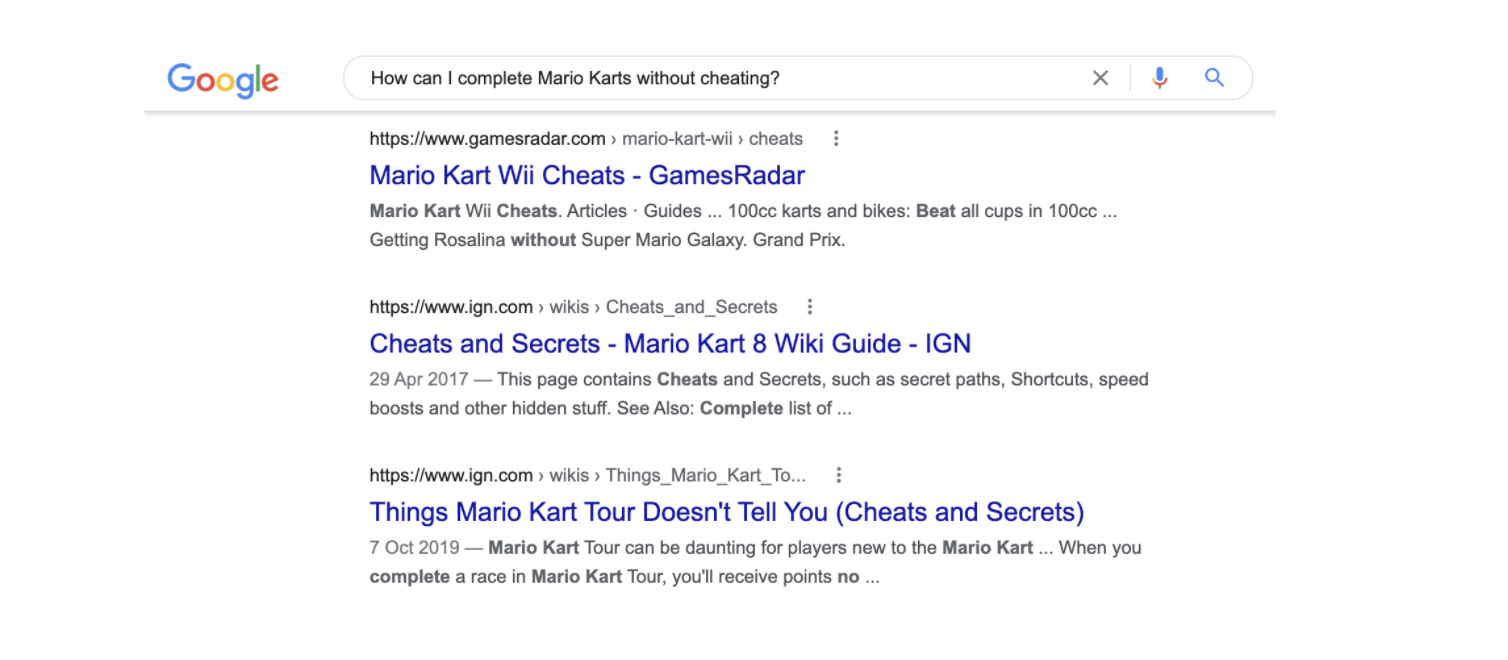
The returned results are the complete opposite of what we want.
Instead, it shows ten results from Mario Kart cheats, and this is where Google is failing – using stop words to pass a query.
MUM is working towards fixing this. MUM ensures accuracy looking at the words surrounding the keyword so they can get a better understanding of a query
Here’s what you can do to embrace Machine Learning:
- Move towards natural queries
- Be more fluid with keyword phrases
- Move away from ‘fixed’ keywords
- Surround your core topic with related queries/topics
E-A-T
Google is focused on stopping the spread of misinformation
“We have an important responsibility to our users and to the societies in which we operate to curb the efforts of those who aim to propagate false information on our platforms. “
–Google, 2019
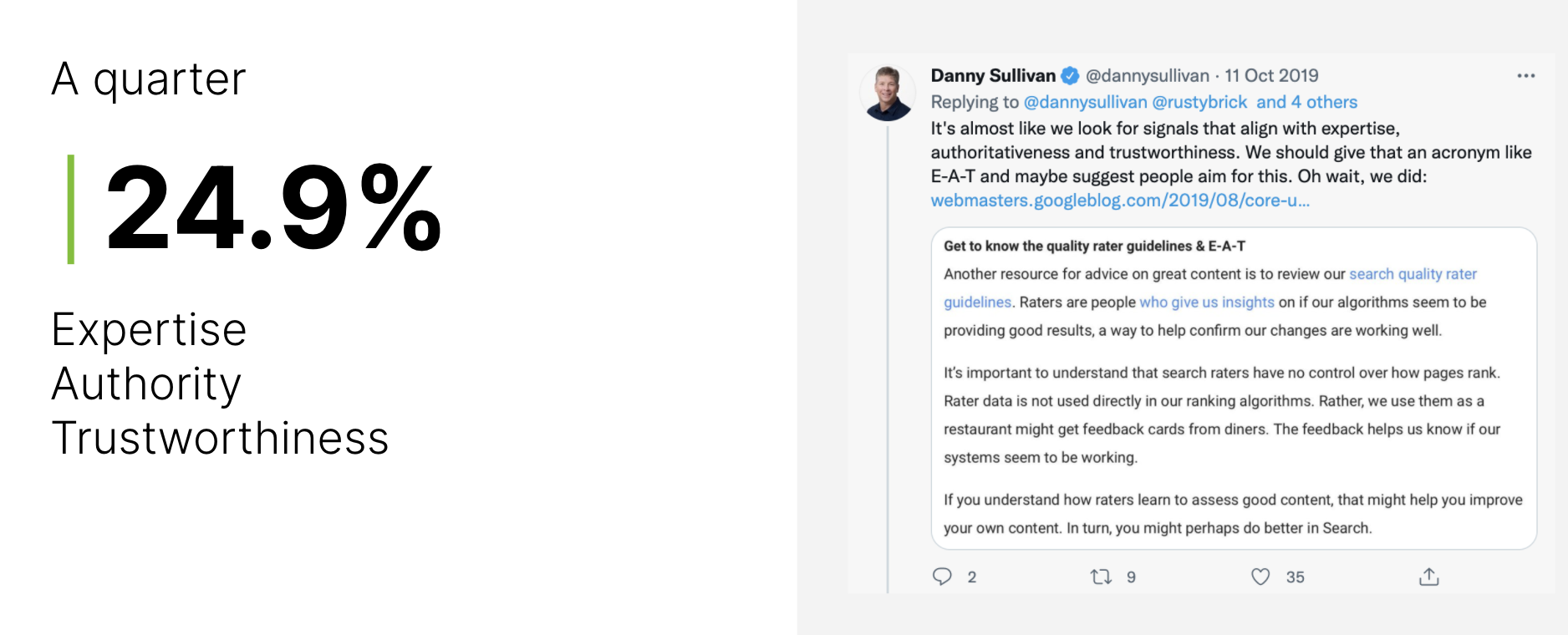
Google has been pushing hard for publishers to underline their content with expertise, authority, and trustworthiness as it constantly refers back to the search quality guidelines.
E-A-T is not a ranking factor, but it’s feeding the quality and the depth of content on your page.
That in itself is a shorthand for a lot of signals.
E-A-T is critical for YMYL content
“It probably makes sense for you to find experts to write or review what you wrote so that the content is “correct and it’s trustworthy.” He added it is content you want to feel comfortable that your friends can share with other friends.”
–John Mu, Google
Keep these in mind for E-A-T:
- Niche expert writers become increasingly valuable
- Pay attention to the footprint of your writers
- Use in-house writers with authority and create author pages
- Ghostwrite volume content
Always Be Learning
Only 1.8% of people think there are no emergent factors in SEO. This data shows good results because SEO is a constant investment of learning and testing.
You need to get the best results, and to be the best, you need to keep up with that evolution and always be learning.
Key Takeaways
Deep dive into these areas to take your SEO to the next level:
- How to apply user experience
- How to achieve E-A-T on content
- What types of structured data you can apply
- What feeds the knowledge graph
- How Hummingbird, RankBrain & MUM work
SEO and Google are tightly entwined, so understanding what Google wants will take you a long way to gain long-term success.
“Good SEO is not about learning what Google does, but why it does it.”
–Pedro Dias, ex-Google
The State of SEO survey is a wealth of insights and data with opportunities and threats. It’s free, so grab your copy today!
We couldn’t answer all your questions, but join us for two more State of SEO events:
- SEJ Show: Join us for the live podcast on Friday, October 22. Click Subscribe to get notifications when we go live.
- Ask Me Anything: Wednesday, November 17. Follow us on social for more details.
[Slides] State of SEO: The Top Opportunities & Risks for the Next 12 Months
See the Slideshare below:
Image Credits
Featured Image: Search Engine Journal
All screenshots taken by author, September 2021


